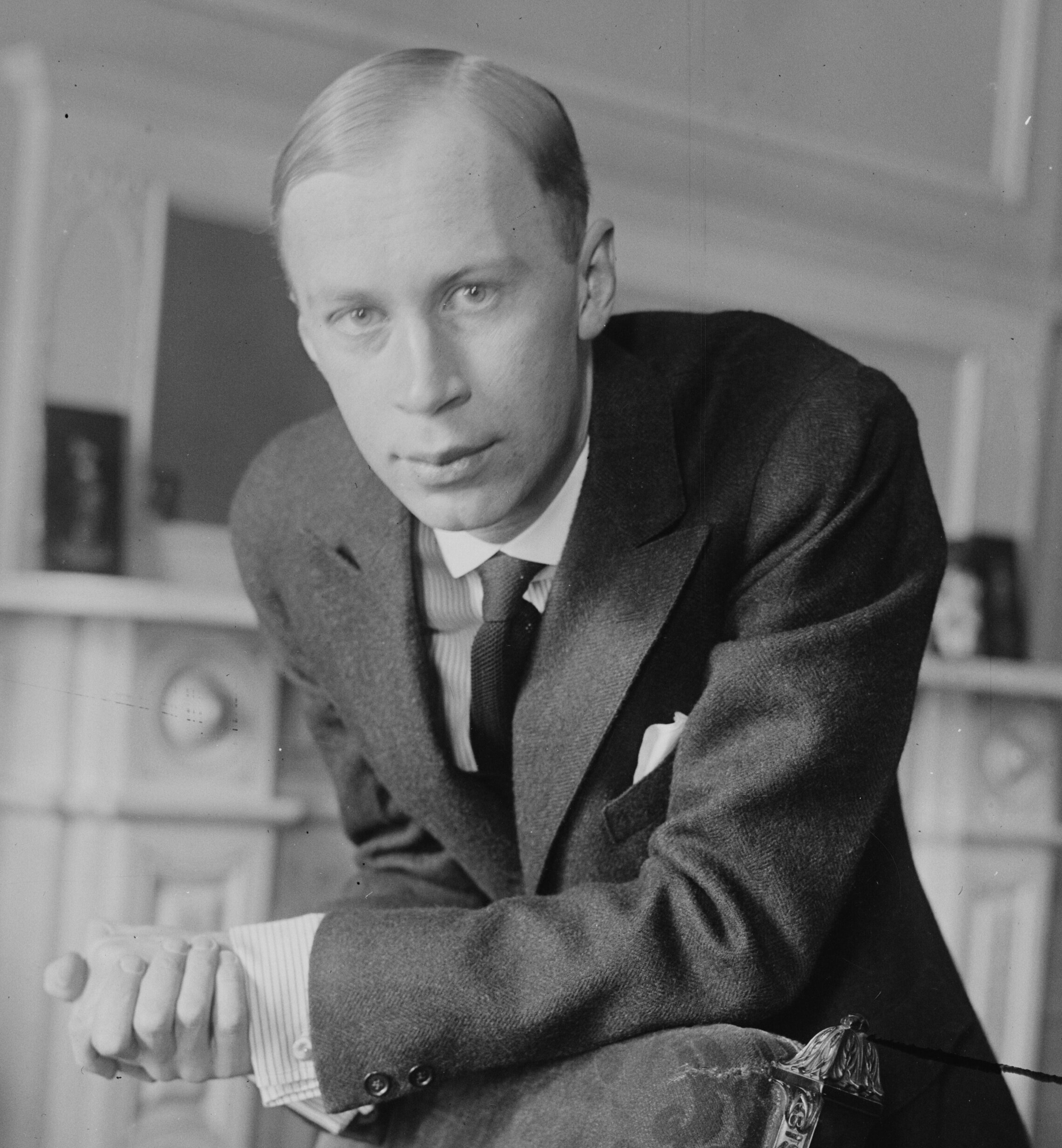 INSTRUMENTATION: two flutes and piccolo, two oboes and English horn, two clarinets and bass clarinet, three bassoons and contrabassoon, four horns, three trumpets, three trombones, tuba, timpani, percussion, two harps, and strings.
INSTRUMENTATION: two flutes and piccolo, two oboes and English horn, two clarinets and bass clarinet, three bassoons and contrabassoon, four horns, three trumpets, three trombones, tuba, timpani, percussion, two harps, and strings.
“Of course I have used dissonance in my time, but there has been too much dissonance. Bach used dissonance as good salt for his music. Others applied pepper, seasoned the dishes more and more highly, till all healthy appetites were sick and until the music was nothing but pepper.” -- Sergei Prokofiev
SUITE: An ordered set of individual pieces for an instrumental ensemble. In the 18th century, these were typically a group of dances, but the term later came to imply a selection of movements from a larger work.
FURTHER LISTENING: Prokofiev: Overture on Hebrew Themes; Symphony No. 1 in D Major, Op. 25; Piano Concerto No. 3 in C Major, Op. 26
War and creativity do not mix well. Despairing of the fallout from the Bolshevik revolution, the Russian composer Sergei Prokofiev departed his mother country for America to try his hand and seek a new fortune in 1918.
Travel then was not as simple as it is now. First, Prokofiev took a 17-day Trans-Siberian rail trip to Vladivostok, where he secured passage to Japan. From there, he took a ship to Honolulu and then to San Francisco, about which he wrote rhapsodically in his diary: “As the mist began to dissipate, the beautiful outlines of the bay began to show themselves. From somewhere came the sound of a bell, not from a church but from foghorns. I did not, of course, expect this to be a place to look for picturesque landscapes, or castles, or legends. This was a country of miraculous comfort, of gold dollars…”
Still, his journey wasn’t yet complete. Immigration officials were holding Russians under strict scrutiny, as there was a great fear of German spies and undercover Bolsheviks at the time. He was held for four days on Angel Island, where he passed the time playing piano — he was a wicked keyboardist — for his fellow Russian travelers. He recounted his final interview with immigration as a farcical exercise: Questioner: “Are you in sympathy with the Bolsheviks?” Prokofiev: “I am not. ” ... “Where is your father?” “In his grave.” “Did he take part in the war?” “No.” “Why not?” “Because he is dead.”
(Get ’em, Prokofiev.)
Apparently, this satirical mood had seized him on the ship, where Prokofiev completed the libretto (script) for a comic new opera, The Love for Three Oranges, based on a theatrical work by Carlo Gozzi. The story is simple: A young prince is cured of his blues when he laughs at a witch’s pratfall. The witch is so embarrassed that she curses him to search out three enormous oranges, each of which contains a princess. He finds them, and the first two perish, but he falls in love with and marries the third.
Prokofiev worked on the piece for a couple of years after arriving in New York City, where he earned a living playing piano and selling his compositions to publishing houses. The opera premiered in Chicago in 1921, where its caustic satire and musical style were met with derision. Later, Prokofiev compiled a six-movement orchestral suite from the opera. More a slice of the world than a narrative, the suite depicts several of the key characters and moments in the opera.
The music is spiky and angular and casts simple tunes with dissonant harmonies. Each of the movements has its charms, from the whooping excitement of “The Ridicules” to the burbling mystery of “The Magician Tchelio and Fata III.” The sarcastic grandeur of the march is particularly famous. The scherzo flits along joyfully, while “The Prince and the Princess” aches with longing, and the final “Flight” spirals frenetically.
